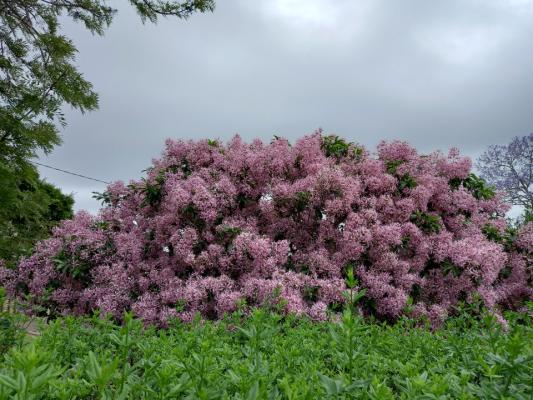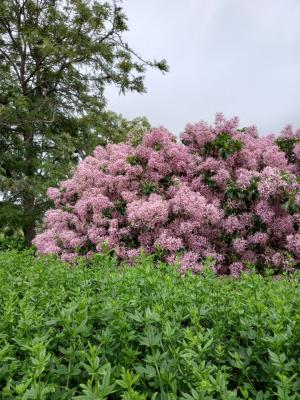By Beatrice Hawkins
Driving around town at present is an absolute delight but can be dangerous for the unwary. There are so many beautiful gardens and flowering trees that you could be easily distracted!!
The Jacarandas are still looking spectacular and in a few places, Cape Chestnut trees are in full flower providing a wonderful sight.
The native frangipanis are still covered in blossoms as are the silky oaks. Some of the smaller grevilleas are coming to the end of their displays, as are the beautiful snowy white melaleuca. A friend told me they are called “Snow in Summer” and other than the fact that they were blooming in spring, this is very appropriate as there was not a leaf to be seen, the trees were just covered in white. The plant I knew as Snow in Summer was a small, grey leafed, ground cover I had growing, over rocks at the back steps, in a garden in Walcha. It was most attractive at all times of the year but when covered in small white flowers in summer, it really did look like snow.
Another native in some streets is taking over where the melaleuca have left off and is also covered in white balls of fluff. I don’t know its name, but it is a tall tree and my guess would be a eucalypt of some variety. Where there are no power lines to worry about they are truly spectacular tall trees covered in white blossoms.
Cape Chestnuts trees are new to me. I haven’t noticed them anywhere else in my travels but that could easily be because I wasn’t travelling at the right time to see them in flower. Covered in slightly fragrant, pink blossoms at the moment they are a wonderful sight and, once again, if I had unlimited space, I would plant one! They are a very attractive evergreen tree with beautiful bark.
As could be deduced from their common name, they are native to Africa from as far north as Kenya right down to the Cape. The explorer William Burchell saw a resemblance to the horse chestnut’s flowers and fruit and that’s how it got the common name. The botanical name is Calodendrum capense. The name comes from the Greek word Kallos, meaning beautiful, and Dendron meaning tree, and whoever gave it this name got it right.. it certainly is a “beautiful tree”!
They are not even a relative of chestnuts but are instead a member of the citrus family. But as occurs in many families, it is a rebel and doesn’t look like a citrus and neither does the fruit. The fruit is 3-5 cm in diameter, bumpy and five-lobed with a black half-moon shaped seed inside. In the photo, I saw they look as if they could be quite decorative… I will have to remember to go and check out the tree I know when it has fruit on it.
It can reach up to 20 metres in a forest but in a garden situation more likely to be 10 or less with a spreading canopy. It does make a good street tree or specimen tree for a garden as it has a non-invasive root system. However, it does suppress growth in its immediate vicinity.
It can be grown from seed or cuttings. Seeds should be sown as soon as they drop in late summer or autumn, or kept refrigerated and planted the following spring or summer. In good soil in deep trays, new seeds should germinate in 10-14 days. The germination of older seeds can be erratic.
The timber from this tree is used in the building industry in South Africa and for furniture and tool handles, suggesting to me that it is straight-grained and strong.
The oil from the seeds, known as Yangu oil, is highly prized and used widely in the cosmetic industry, particularly in South Africa. The oil has a high content of essential fatty acids and antioxidants, has a mild odour and inherent ultraviolet protection. In its natural habitat, its “warty and woody” seeds are eaten by birds and monkeys. While birds may be a problem here I don’t think the local monkey population will cause much trouble!!
They like full sun, protection from frosts until established, good drainage, but not sandy soil, and water in the heat of summer, but are also listed as drought tolerant when established. They are a fairly slow starter and may take a year or two to flower but when they do they are spectacular… the two on the grounds of the Uniting church must have almost ideal conditions and look wonderful at the moment. They do handle pruning but this is not usually necessary.
Another beautiful evergreen flowering in many gardens at present is the Little Gem Magnolia. The large cream flowers are really lovely and the large green leaves with the bronze reverse look great. It is a dwarf variety of the Southern Magnolia from the USA and seems to be ideally suited to our area. It will grow in many places from Rockhampton in the north down the east coast, around the south and up the west coast to Geraldton. With its smaller size, it deserves a spot in many gardens.








